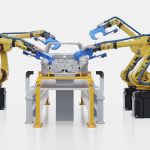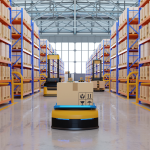As trade wars and AI disruption collide, a new class of intelligent systems is emerging—equipping supply chain leaders to act fast, adapt early, and build smarter.
Trade Barriers. AI Acceleration. One Industry, Two Frontlines.
Global supply chains are facing a dual shockwave—escalating trade conflicts on one side, and a surge of AI-driven transformation on the other. Tariff hikes and retaliatory policy moves are upending cost structures and sourcing strategies, while rapid advances in AI are redrawing how decisions get made inside the enterprise.
The result: a level of operational complexity that surpasses even the chaos of the pandemic. Where COVID-19 disrupted logistics temporarily, the new era of “trade and tech wars” introduces persistent, structural instability. Traditional planning systems—reliant on historical data and rigid workflows—simply weren’t built for this kind of volatility.
A strategic reset is underway. And it’s being led by those rethinking the architecture of resilience itself.
From Predictive Models to Intelligent Systems of Action
We’re now seeing the emergence of a new generation of supply chain platforms—systems that combine governed data fabrics with AI agents capable of understanding context, simulating outcomes, and executing decisions autonomously.
These agents go beyond analytics. They monitor real-time data across inventory, risk, and transportation nodes, flag issues before they escalate, and initiate workflows to correct course. Crucially, they don’t operate in isolation—they’re enabled by a unified data foundation that breaks down silos and allows insight to travel with speed and integrity across the network.
Partnerships between leading supply chain software providers and cloud data platforms like Databricks are accelerating this shift. By integrating industrial-grade data fabrics into orchestration tools, these companies are laying the groundwork for AI that’s not just reactive—but decisively useful.
Trust, Transparency, and the Rise of Industrial AI
For all its promise, AI in supply chain still has one Achilles’ heel: trust. Many organizations are experimenting with generative models and automation pilots, but without clean, governed data flowing through the system, intelligent agents become little more than faster error engines.
That’s why the conversation is shifting from “AI-first” to “data-foundation-first.” Technologies like Delta Sharing, industrial DataOps, and explainable AI models are becoming essential—not to impress, but to operate responsibly. As supply chain decisions become more complex and more automated, knowing why a decision was made matters just as much as how fast it was made.
The Real Shift: From Planning to Preparedness
We’re long past the point where better forecasting can carry the weight of global volatility. What’s becoming clear is that the real differentiator isn’t who predicts disruption best—but who’s structurally prepared to absorb it.
That shift doesn’t demand a complete overhaul, but it does call for decisive movement. Strengthening data foundations should come first—ensuring information is accurate, unified, and accessible across functions. From there, leaders can begin identifying high-friction, high-impact areas where intelligent agents can automate repetitive decisions and elevate exception handling. In parallel, embedding AIOps and DataOps disciplines helps ensure these systems remain trustworthy and auditable as complexity grows.
Resilience now depends less on knowing what will happen next and more on being ready for anything. That won’t be found in forecasts alone—but in the systems, processes, and partnerships supply chains are building today.







